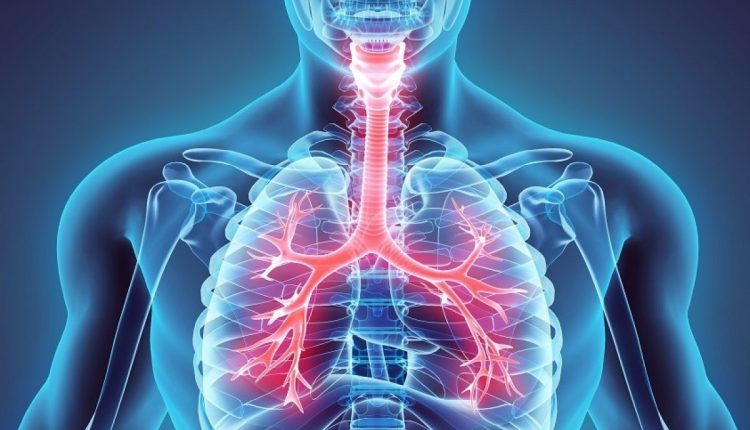
What is Chronic Obstructive Pulmonary Disease (COPD)?
COPD (Chronic Obstructive Pulmonary Disease) is a heterogeneous and complex clinical syndrome characterized by the progressive decline of respiratory function, caused by chronic inflammation of the airways induced mainly by cigarette smoking
Chronic bronchitis and pulmonary emphysema can be the origin of this pathology.
COPD today represents both in Italy and in the rest of the world the most frequent cause of disability and death among all respiratory diseases.
Causes of COPD
Cigarette smoking is the leading risk factor for COPD.
The age of onset and the daily number of cigarettes smoked condition the evolution of the disease.
Quitting smoking, on the other hand, slows down its evolution.
The role played by domestic, environmental and work pollution in the development of the disease is less known than that of cigarette smoke, but reports of an existing relationship between these agents and the onset of COPD are increasingly numerous.
However, regardless of the risk factor, there is individual variability in the development of the disease.
The evidence that genetic factors are important in the determinism of COPD derives from the observation of subjects with alpha1-antitrypsin deficiency who present a high risk of developing COPD, especially if they are habitual smokers.
COPD symptoms
COPD is a chronic disease capable of significantly affecting the quality of life of patients.
The clinical symptomatology is also decisive for the purposes of defining the severity of the disease.
Typical symptoms are chronic productive cough (or recurring for a minimum of 3 months/year for at least 2 consecutive years), shortness of breath, dyspnoea associated with a lower tolerance to effort.
These disorders evolve in a progressive and irreversible manner, even if quitting smoking can delay functional decline and reduce respiratory symptoms.
The spectrum of severity is extremely broad and can vary from the slight and transient increase in symptoms that can be managed independently by the patient, up to extremely serious conditions for which hospitalization in intensive care is necessary or the activation of an oxygen therapy plan or of mechanical ventilation.
Worsening of symptoms leads to an exacerbation of the disease.
Exacerbations have a significant impact on the evolution of the disease and are frequently caused by respiratory infections especially in the winter months.
The diagnosis of COPD in the general population is currently underreported
Spirometry, an indispensable method for correctly diagnosing COPD and evaluating its progression, is underused.
On the other hand, an exact diagnosis and a correct functional evaluation allow for the early implementation of measures capable of reducing symptoms, improving the quality of life, slowing down the progression of the disease.
A correct objective examination is the first element useful for the diagnosis due to the possibility of detecting wheezing, hyperexpansion of the chest, cyanosis.
However, the spirometry test remains the fundamental test for assessing respiratory function and defining the severity of the disease.
Radiographic examinations (chest X-ray and CT) show structural alterations of the airways but must be reserved for cases of absolute necessity.
Finally, blood gas analysis (determination of gases in arterial blood) shows the levels of oxygen and carbon dioxide.
Treatment of COPD
Cigarette smoking cessation is the only treatment capable of slowing down the evolution of the disease.
Today we have a series of drugs capable of improving symptoms, reducing the number of exacerbations, improving the patient’s quality of life, but not capable of slowing down the progressive deterioration of respiratory function.
COPD therapy makes use of bronchodilators and corticosteroids, mainly and preferably used by inhalation.
Theophylline should be used under strict medical supervision due to possible side effects.
Antibiotics are useful only during an exacerbation caused by respiratory tract infections.
In the most serious cases, but above all in chronic respiratory insufficiency, it is necessary to use long-term oxygen therapy and in some cases mechanical ventilation is used.
Pulmonary rehabilitation is an integral part of the treatment of COPD: rehabilitation programs can in fact positively influence the function of the respiratory and peripheral muscles and the nutritional status of the patient.
Unfortunately we know that patient adherence to therapy is generally poor, therefore patient education is a fundamental intervention for optimizing the therapeutic-rehabilitation programme.
Read Also:
Emergency Live Even More…Live: Download The New Free App Of Your Newspaper For IOS And Android
Blind Insertion Airway Devices (BIAD’s)
Oxygen-Ozone Therapy: For Which Pathologies Is It Indicated?
Hyperbaric Oxygen In The Wound Healing Process
Venous Thrombosis: From Symptoms To New Drugs
What Is Intravenous Cannulation (IV)? The 15 Steps Of The Procedure
Nasal Cannula For Oxygen Therapy: What It Is, How It Is Made, When To Use It
Pulmonary Emphysema: Causes, Symptoms, Diagnosis, Tests, Treatment
Extrinsic, Intrinsic, Occupational, Stable Bronchial Asthma: Causes, Symptoms, Treatment
A Guide To Chronic Obstructive Pulmonary Disease COPD
Bronchiectasis: What Are They And What Are The Symptoms
Bronchiectasis: How To Recognise And Treat It
Pulmonary Vasculitis: What It Is, Causes And Symptoms
Bronchiolitis: Symptoms, Diagnosis, Treatment
Chest Pain In Children: How To Assess It, What Causes It
Bronchoscopy: Ambu Set New Standards For Single-Use Endoscope



